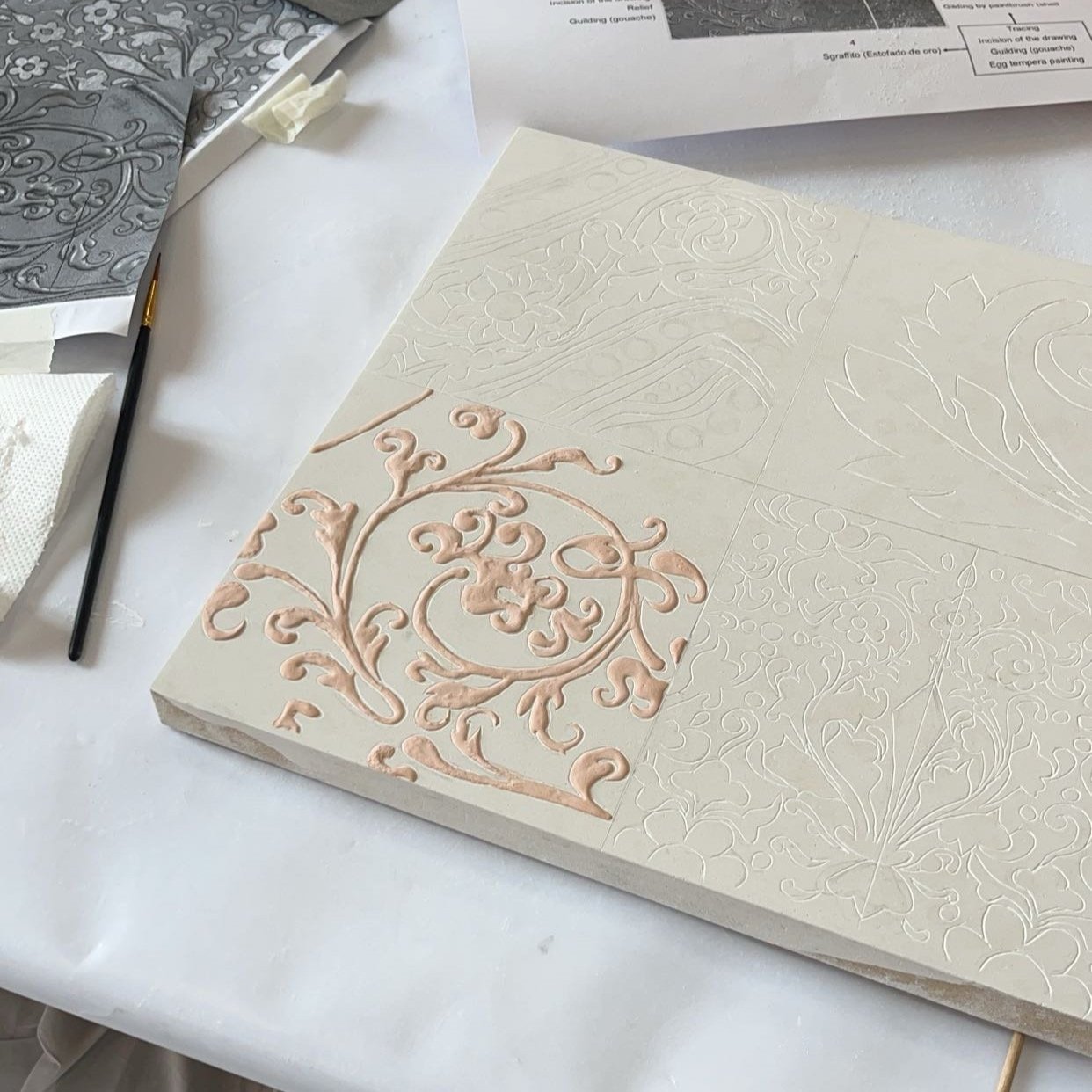Art Restoration and Conservation International Field School
Amelia International Conservation Studies
Summer 2024
Program Description
During the summer of 2024 I was very fortunate to be involved in the ARCIFS Amelia International Conservation Studies program. This month-long program took place in Amelia, Umbria, Italy and was divided into 3 sections: a lecture on traditional painting materials and methods, a seminar on the history, theory, and ethics of restoration, and a studio section where we students were able to learn the various techniques of traditional paintings.
Experiencing Traditional Painting Materials and Methods
This course provides a comprehensive exploration of the traditional painting materials and techniques that were commonly employed in Italy during the Middle Ages and the Renaissance.
With a primary focus on individuals aspiring to study art conservation, the course also investigates the factors that accelerate the deterioration of these materials, along with the various restoration approaches employed to address them.
History, Theory and Ethics of Restoration
Going beyond the material aspects of restoration, these lecture/discussion classes examine the various social goals, motivations, approaches, and ethical and philosophical issues that guide the complex process of preserving cultural heritage. Various topics on preventative conservation, conservation, and restoration of traditional and contemporary materials as well as ‘new’ and technology-based media provide an insight into the ample world of restoration.
Studio Work
As part of the practical element of this course, we were able to apply and practice various traditional painting methods in the studio. This included fresco, sgraffito, gilding, tempera painting, and oil painting.
Fresco Painting
This technique involved mixing together slacked lime and a sand aggregate to create a mortar, and applying this mixture in two layers onto the support to create an arriccio (first layer) and intonaco (second layer) for painting. While the intonaco was wet, we transferred the design by scoring the plaster to render the drawing. We then executed the fresco painting. After allowing the fresco to fully set, we utilized the strappo technique to separate the image from the plaster to canvas.
Gilding Techniques
For this section of the studio class, we practiced various methods of gilding with (imitation) gold leaf on panel. Using red bolo as a binder for the leaf, we practiced the gouache gilding method, burnishing, and the mordant gilding method. We then used the punching technique as well as egg tempera to decorate the panel, and then utilized the sgraffito method to add embellishments.
Egg Tempera & Gilding
For this panel, we used both egg tempera pigments and imitation gold leaf to create the image. After carrying out the tempera painting element, we utilized red bolo to bind the gold leaf, and used the punching method to add embellishments to the gold ground.
Oil Painting
For this project, we first built the stretcher for the canvas using fitted pieces of poplar wood. We then cut the rough canvas to size, stretched the canvas over the stretcher, and attached them together using nails. Afterwards, we coated the canvas with three layers of animal glue, and once dry, sanded the surface to smooth it. We then applied a preparatory layer to the canvas. As a class, we had mixed the oil paint by grinding the pigments and linseed oil with a pestle until smooth, creating the paints we needed. To transfer the drawing to the canvas, we utilized the pounced drawing technique with pigment. Then, the canvas was ready for the oil painting.












